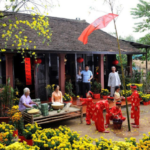The Mid-Autumn Festival, celebrated on the 15th day of the 8th lunar month, is a holiday dedicated to children in Vietnam. For the Vietnamese, this festival is incomplete without the images of Chang’e, Cuoi, and lion dances, alongside feasts with various types of sticky rice cakes, mooncakes, and baked mooncakes. Thus, Vietnamese children eagerly anticipate this festival. Let’s explore how Mid-Autumn Festival is celebrated in other countries and how it differs from the traditions in Vietnam.
1 Mid-Autumn Festival in South Korea
In South Korea, the Mid-Autumn Festival, known as Chuseok, is an important holiday and a day of thanksgiving. On this day, people give thanks to their ancestors for a bountiful harvest and successful farming season. Chuseok is the second biggest holiday in the country, and people usually have a three-day break to celebrate.
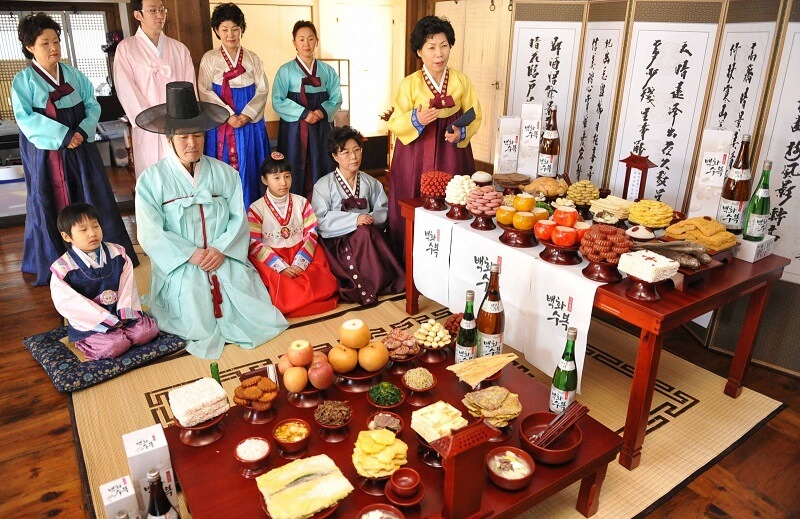 Mid-Autumn Festival in South Korea
Mid-Autumn Festival in South Korea
Similar to Vietnam, families gather together during this festival. They wear colorful traditional clothes, and the eldest son represents the family in offering sacrifices to their ancestors. The family then dances and plays traditional games.
During Chuseok, Koreans make a type of rice cake called Songpyeon, which has a half-moon shape and various fillings. This is a must-have during the festival. While lion dances are common in Vietnam, Koreans celebrate with Talchum mask dances and the Ganggangsullae circle dance.
Before the Mid-Autumn Festival, Koreans visit their ancestors’ graves to pay their respects and remember their ancestors’ contributions.
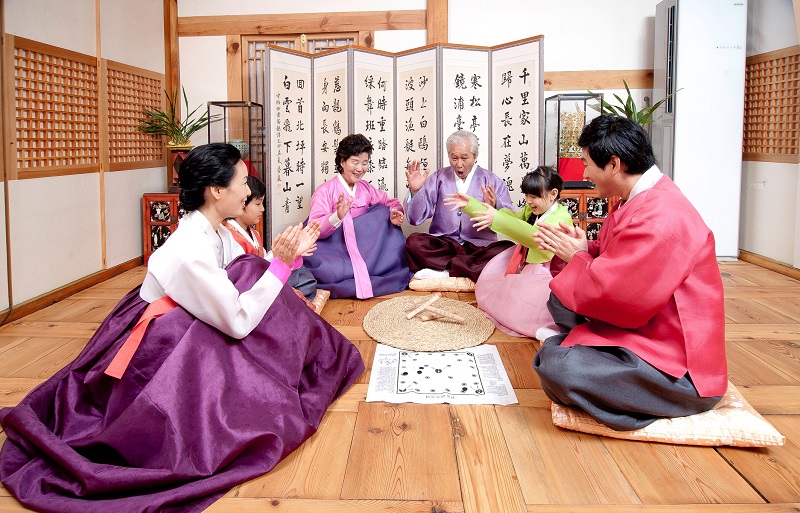 Families gather and wear colorful traditional clothes
Families gather and wear colorful traditional clothes
2 Mid-Autumn Festival in China
The Mid-Autumn Festival has a long history in China, and Vietnam has also been influenced by this festival. It is considered a reunion festival, a time for Chinese families to gather and celebrate together.
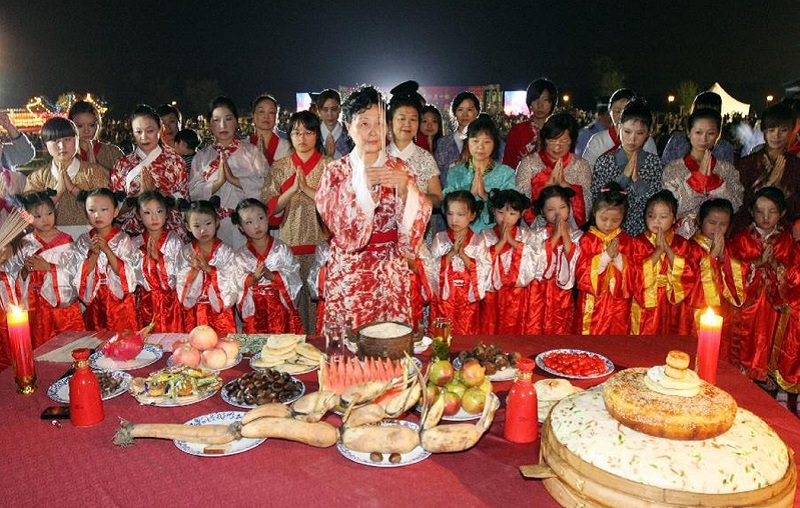 Mid-Autumn Festival in China
Mid-Autumn Festival in China
Similar to Vietnam, the Chinese make mooncakes during this festival. The mooncakes are round, symbolizing reunion and fulfillment. The baking process and fillings, such as lotus seed paste, mung bean paste, or salted egg yolks, are also similar to Vietnamese mooncakes.
Lion dances are a distinctive feature of the Mid-Autumn Festival in China. This festival is the second most important holiday of the year, after Chinese New Year.
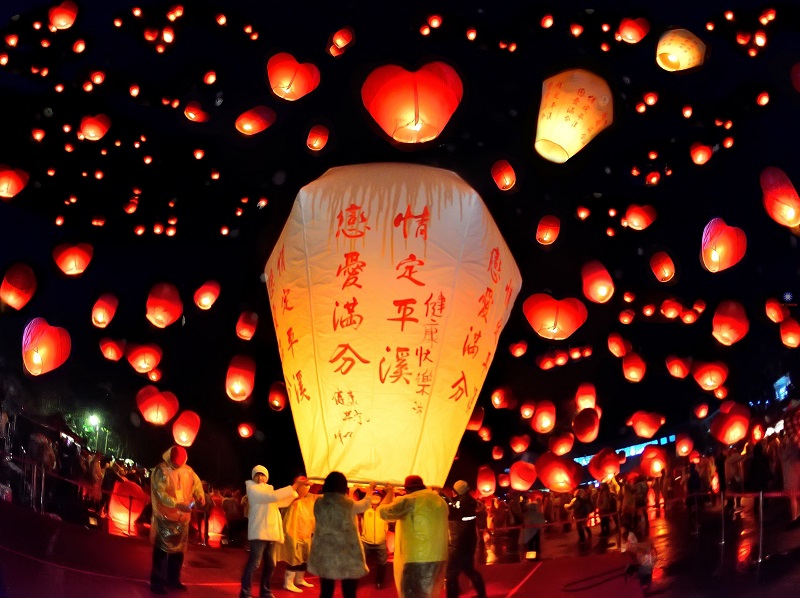 The second biggest holiday of the year, after Chinese New Year
The second biggest holiday of the year, after Chinese New Year
3 Mid-Autumn Festival in Japan
In Japan, the Mid-Autumn Festival is called Tsukimi, or the moon-viewing festival, and it is held on the 15th day of the 8th lunar month every year. The traditional food for this festival is Tsukimi Dango, small, round, white dumplings that are usually offered to the moon on household altars.
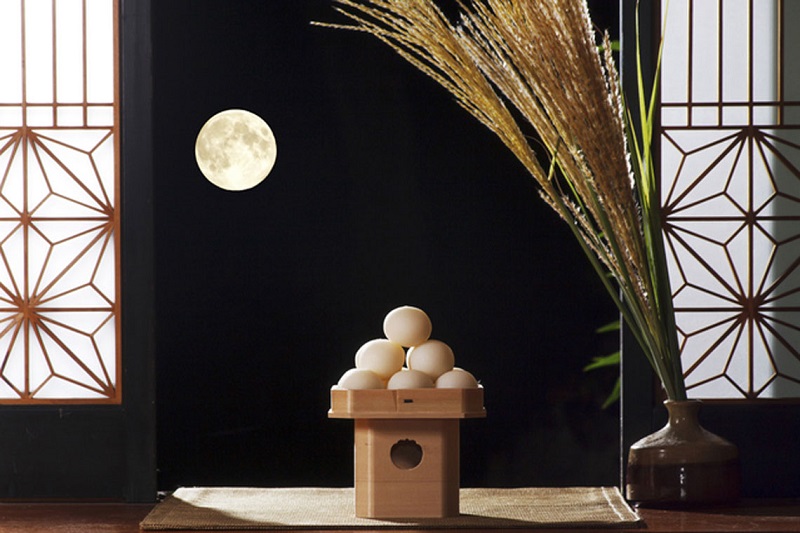 Mid-Autumn Festival in Japan
Mid-Autumn Festival in Japan
During Tsukimi, Japanese children, especially boys, carry carp-shaped lanterns in a lantern parade. The carp-shaped lantern symbolizes courage.
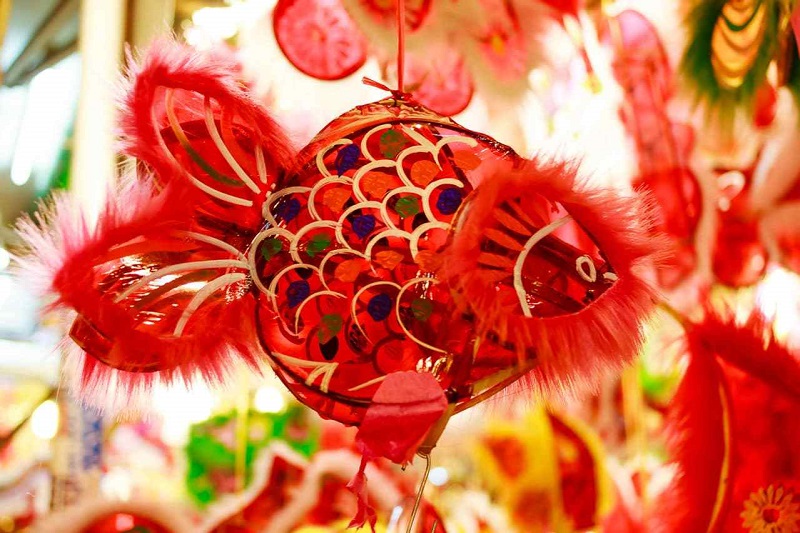 Boys carry carp-shaped lanterns in the lantern parade
Boys carry carp-shaped lanterns in the lantern parade
4 Mid-Autumn Festival in Thailand
In Thailand, the Mid-Autumn Festival is called “Lantern Festival” and falls on the 15th day of the 8th lunar month. On this day, people gather around the altar of Guan Yin Bodhisattva and the Eight Immortals to pray for the best for their families, the world, and even those who have made mistakes.
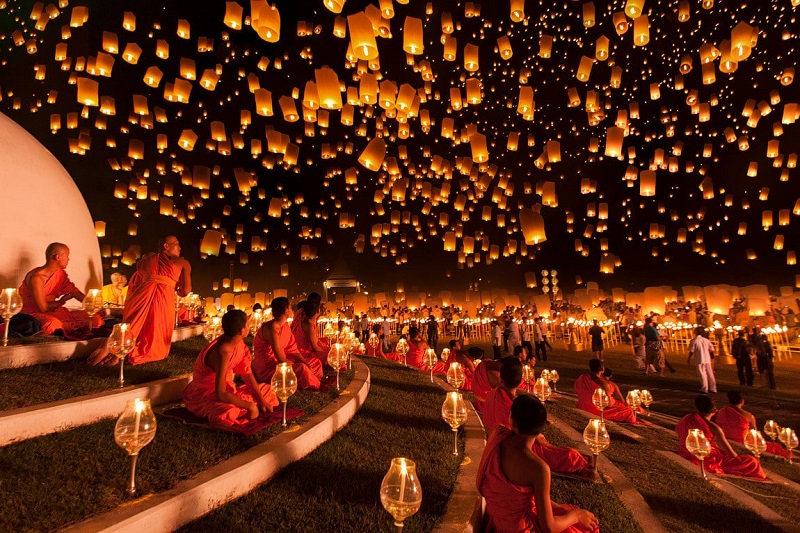 Mid-Autumn Festival in Thailand
Mid-Autumn Festival in Thailand
Unlike other countries, mooncakes in Thailand are shaped like peaches and are offered to the Eight Immortals and Guan Yin. Additionally, people often eat pomelos during this festival as they symbolize fulfillment, reunion, and happiness.
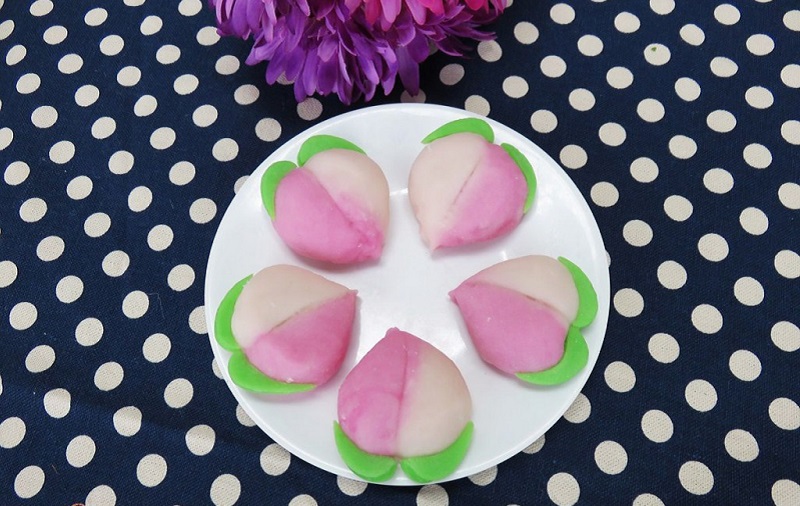 Thai mooncakes are shaped like peaches
Thai mooncakes are shaped like peaches
5 Mid-Autumn Festival in Myanmar
The Mid-Autumn Festival in Myanmar is also known as the Full Moon Festival or the Festival of Lights. During this festival, the whole country is illuminated with lanterns, and lights shine in every corner. The mooncakes in Myanmar are similar to those in Vietnam and China, with fillings like mung bean paste and salted egg yolks.
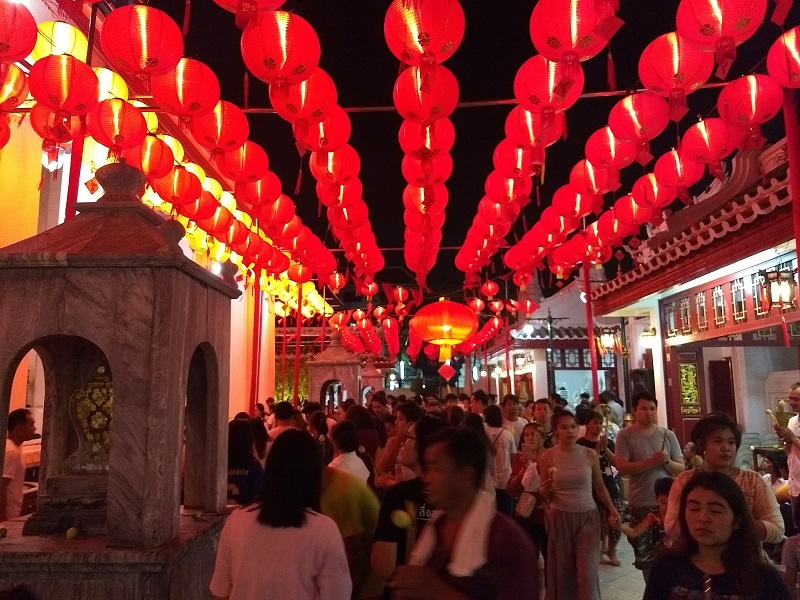 Mid-Autumn Festival in Myanmar
Mid-Autumn Festival in Myanmar
6 Mid-Autumn Festival in the Philippines
Initially, the Philippines did not have a Mid-Autumn Festival, but it was introduced by a group of Chinese people who migrated there for work. However, the Philippines has developed its unique traditions for this festival, distinct from other countries. The traditional food for this occasion is a cake called Hopia, which comes in various flavors, such as mungo (mung bean), baboy (pork), and ube (purple yam).
During the Mid-Autumn Festival, Filipinos also play dice games, adding excitement and liveliness to the celebration.
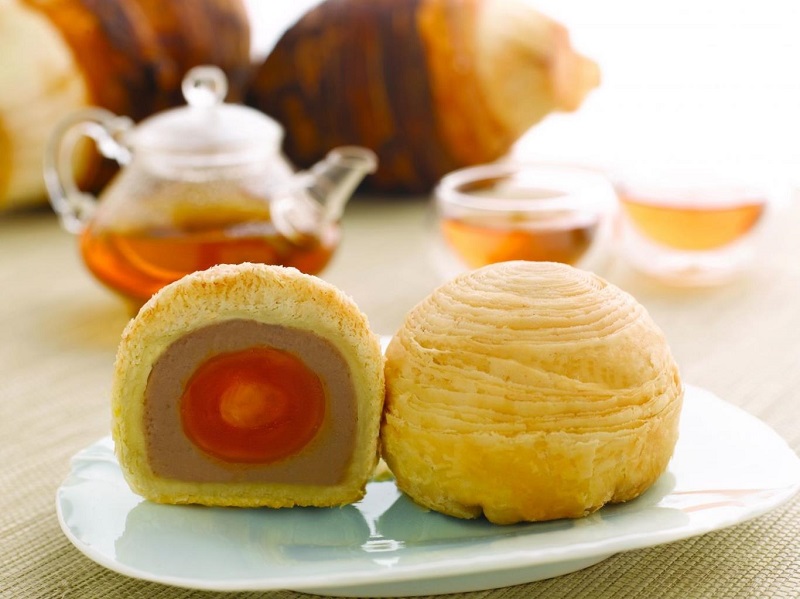 Mid-Autumn Festival in the Philippines
Mid-Autumn Festival in the Philippines
7 Mid-Autumn Festival in North Korea
The Mid-Autumn Festival in North Korea is quite similar to that in South Korea. North Koreans also visit their ancestors’ graves during this festival, but unlike South Koreans, who do so before the holiday, North Koreans visit the graves on the day of the festival itself.
The types of cakes and dances during the Mid-Autumn Festival are also considered similar in the two countries.
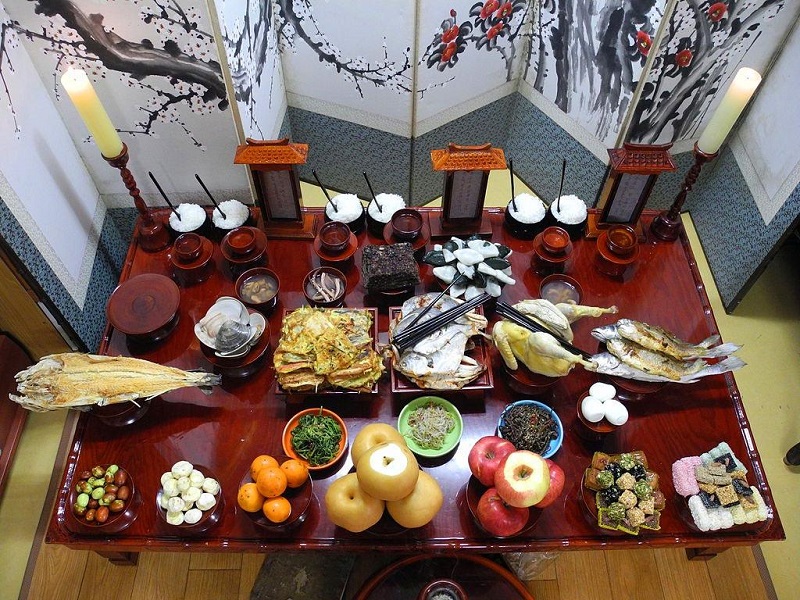 Mid-Autumn Festival in North Korea
Mid-Autumn Festival in North Korea
We hope this article has provided you with interesting insights into how the Mid-Autumn Festival is celebrated in different countries around the world.
Explore 12 Amazing Destinations for Biking Trips
Unlock Vietnam in a brand new way with an exciting biking tour! Discover the stunning beauty of the country with Dien May XANH’s top 12 must-see destinations. From sweeping plains to clear blue beaches and mountainous vistas – experience all the sights with your own personal cycling tour. Find your ideal route and set out for an adventure today!

























